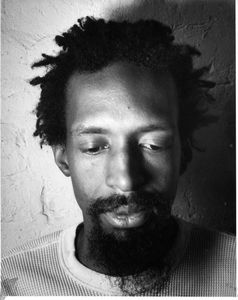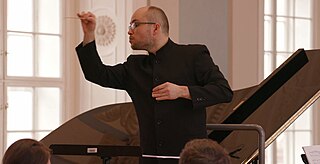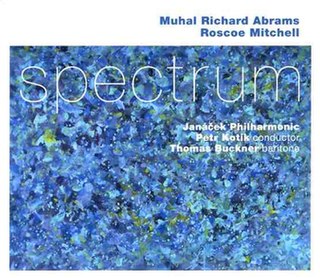Related Research Articles

Leoš Janáček was a Czech composer, musical theorist, folklorist, publicist, and teacher. He was inspired by Moravian and other Slavic music, including Eastern European folk music, to create an original, modern musical style.

Ostrava is a city in the north-east of the Czech Republic, and the capital of the Moravian-Silesian Region. It has about 280,000 inhabitants. It lies 15 km (9 mi) from the border with Poland, at the confluences of four rivers: Oder, Opava, Ostravice and Lučina. Ostrava is the third largest city in the Czech Republic in terms of both population and area, the second largest city in the region of Moravia, and the largest city in the historical land of Czech Silesia. It straddles the border of the two historic provinces of Moravia and Silesia. The wider conurbation – which also includes the towns of Bohumín, Havířov, Karviná, Orlová, Petřvald and Rychvald – is home to about 500,000 people, making it the largest urban area in the Czech Republic apart from the capital Prague.
The Hartt School is the performing arts conservatory of the University of Hartford, a private university in West Hartford, Connecticut. Founded in 1920 by Julius Hartt and Moshe Paranov, Hartt has been part of the University of Hartford since its charter merged the then Hartt College of Music, the Hartford Art School, and Hillyer College to create the university in 1957. The Hartt School offers undergraduate and graduate degrees in music, dance, theatre, and associated disciplines. The Hartt Community Division offers a variety of opportunities in music and dance for students of all ages, backgrounds, and abilities.
S.E.M. Ensemble is an American group dedicated to the performance of contemporary classical music. It was founded in 1970 by the Czech composer Petr Kotik, who serves as its director, and is based in New York City.

Julius Eastman was an American composer, pianist, vocalist, and performance artist whose work is associated with musical minimalism. He was among the first composers to combine minimalist processes with elements of pop music, and involve experimental methods of extending and modifying music in creating what he called "organic music". He often gave his pieces titles with provocative political intent, such as Evil Nigger and Gay Guerrilla, and has been acclaimed following new performances and reissues of his music.
Marek Kopelent was a Czech composer, music editor and academic teacher, who is considered to have been at the forefront of the "New Music" movement, and was one of the most-published Czech composers of the second half of the 20th century.

Jan Jakub Kotík was a Czech artist and rock drummer – born on 22 October 1972 in Buffalo, New York, United States. He died at the age of 35 on 13 December 2007 in Prague, Czech Republic.

The Film and TV School of the Academy of Performing Arts in Prague or FAMU is a film school in Prague, Czech Republic, founded in 1946 as one of three branches of the Academy of Performing Arts in Prague. It is the fifth oldest film school in the world. The teaching language on most courses at FAMU is Czech, but FAMU also runs certain courses in English. The school has repeatedly been included on lists of the best film schools in the world by The Hollywood Reporter.
The Janáček Philharmonic Orchestra is a Czech orchestra based in Ostrava, Czech Republic. Named after composer Leoš Janáček, the orchestra performs its concerts at the City of Ostrava Cultural Centre.
Petr Kotik is a composer, conductor and flutist living in New York City. He was educated in Europe. From 1960 to 1963, Kotik studied composition privately with Jan Rychlík in Prague, and from 1963 to 1966 at the Music Academy in Vienna with Karl Schieske, Hans Jelinek, and Friedrich Cerha. In Prague, he founded and directed Musica Viva Pragensis (1961–64) and the QUAX Ensemble (1966–69). He came to the United States in 1969 at the invitation of Lukas Foss and Lejaren Hiller to join the Center for Creative and Performing Arts at the University at Buffalo.
František Brož was a Czech violist, composer, conductor and music educator.

Petr Václav is a Czech film director and screenwriter whose films have received many awards, both in the Czech Republic and internationally. He has lived in Paris since 2003 and holds both French and Czech citizenship.
James Saunders is a British composer and performer of experimental music. He is Professor of Music and Head of the Centre for Musical Research at Bath Spa University.
Edna Michell is an Israeli-American violinist, pedagogue, and founder and director of music festivals, institutes, and concert series, known for her versatility and her efforts to expand the violin and chamber music repertoire.

Rocc is a Slovenian-born opera stage director, scenic designer, dramaturge, performance artist, opera manager and pedagogue. His mononymous pseudonym is a tribute to Marie Mrázková, Rocc's professor of stage acting and his life mentor.
Berg Orchestra, initially formed as a group of like-minded music students in 1995 and officially founded in 2001 by Slovak conductor Peter Vrábel, is a professional orchestra in Prague, Czech Republic whose stated objective is "to constantly search for inspiration and accommodate new impulses from every sphere of contemporary life."

The Bohuslav Martinů Complete Edition aims to publish the complete works of Czech composer Bohuslav Martinů (1890–1959). The BMCE is a complete historical critical edition of all the finished and unfinished compositions of Bohuslav Martinů. It is based on the scholarly assessment of all available sources and analysed with the newest methods of textual criticism and music philology. The BMCE is a highly complex undertaking that offers numerous organisational, legal, and academic challenges. The first volume was published in 2014, and the project is scheduled to issue a total of 106 volumes in the course of 53 years. For these reasons, the BMCE is regarded as the pre-eminent undertaking of contemporary Czech music publishing.

Jack Callahan is an American experimental musician and audio engineer. He is best known for performing under the moniker die Reihe, taken from the journal of the same name edited by Herbert Eimert and Karlheinz Stockhausen.

Ondřej Vrabec is a Czech conductor and horn player, currently solo horn of the Czech Philharmonic Orchestra. From 2022 season he will become Chief Conductor of the Karlovy Vary Symphony Orchestra.

Spectrum is a live album by pianist and composer Muhal Richard Abrams and saxophonist and composer Roscoe Mitchell. It was recorded at Philharmonic Hall in Ostrava, Czech Republic, and was released by Mutable Music in 2009. The album begins with an improvised duet by Abrams and Mitchell titled "Romu." This is followed by Mitchell's three-part "Non-Cognitive Aspects of the City" for baritone and orchestra, commissioned by Mutable Music, with a text by Joseph Jarman, and featuring singer Thomas Buckner with the Janáček Philharmonic Orchestra. The album concludes with the Janáček Philharmonic's performance of Abrams's "Mergertone" for orchestra, commissioned by the Ostrava Center for New Music and premiered at the opening concert of the Ostrava Days 2007 festival. Both orchestral works were conducted by Petr Kotik.
References
- ↑ Gottschalk, Kurt (26 October 2011). "A Week of Ostrava Days". New Music Box . Retrieved 25 April 2014.
- 1 2 Bakla, Petr (April 2007). Ostrava Days 2007: "Institute and festival of new music". Czech Music. Retrieved 25 April 2014.
- ↑ Asiedu, Dita (5 August 2005). "Contemporary musician Petr Kotik shares experiences at Ostrava Days". Radio Prague. Retrieved 25 April 2014.
- ↑ Nepil, Hannah (6 September 2011). "Ostrava Days 2011, Ostrava, Czech Republic". Financial Times . Retrieved 25 April 2014.
- ↑ Ostrava Days Institute. newmusicostrava.cz. Retrieved 25 April 2014.
- ↑ Hicks, Michael and Asplund, Christian (2012). Christian Wolff, p. 89. University of Illinois Press. ISBN 0252094166
- ↑ Ozuna, Tony (7 August 2013). "Philip Glass to play five-hour concert in Ostrava". Prague Post
- ↑ Kuznik, Frank (29 September 2013). "Season Openers"". Cultured Cleveland .Retrieved 25 April 2014.